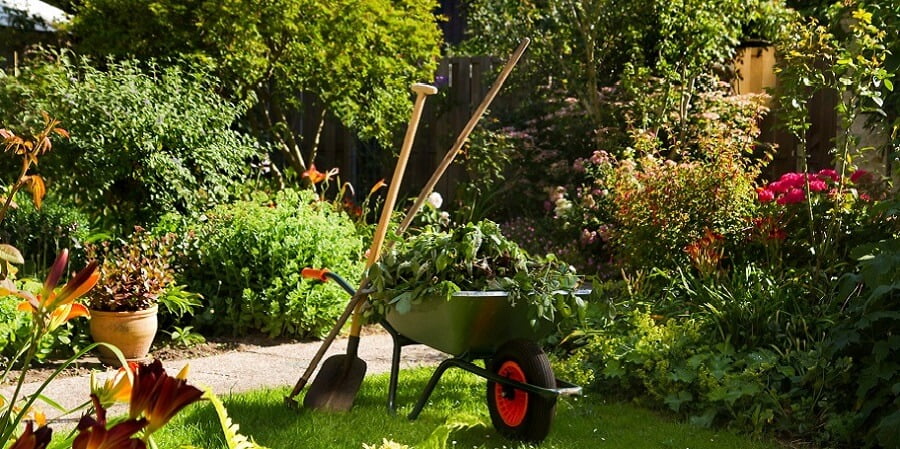Pruning drift roses is an essential task for maintaining the health, shape, and blooming potential of these beautiful plants. Whether you are dealing with hybrid teas, climbers, or landscape roses, understanding the specific pruning techniques for each type is crucial. In this comprehensive guide, we will explore the different types of roses and the best practices for pruning them.
Key Takeaways
- Pruning is necessary to maintain the health and blooming potential of drift roses.
- Understanding the specific pruning techniques for each type of rose is crucial.
- Hybrid tea roses, climbing and rambler roses, and landscape roses require different pruning methods.
- Proper pruning cuts, clean pruners, and protection from pest infestation are important for rose health.
- With the right techniques, you can master the art of drift roses pruning and enjoy vibrant and healthy roses in your garden.
Why Prune Roses and Different Pruning Techniques
Pruning is a vital part of caring for your rose plants, and it serves several important purposes. By understanding why we prune roses and the different techniques involved, you can ensure the health, beauty, and productivity of your rose garden.
Firstly, pruning allows you to remove any winter-killed canes, which are branches that have died during the colder months. These dead canes not only detract from the aesthetic appeal of your roses but also harbor diseases and pests that can harm the plant. By removing them, you promote the overall health of your roses.
Additionally, pruning helps control the size of your roses. If left unpruned, they can become overgrown and unruly, making it difficult to maintain their shape and structure. Regular pruning helps keep your roses compact and well-shaped, enhancing their appearance in your garden.
Furthermore, pruning plays a crucial role in training your rose plants for optimal blossom production. By selectively removing certain canes and branches, you can encourage the growth of new canes that will produce an abundance of beautiful blooms. Different types of roses require different pruning techniques, so it’s important to understand the specific needs of each variety in your garden.
Pruning Tips for Hybrid Tea Roses
Hybrid tea roses are known for their stunning blooms and captivating fragrance. To keep your hybrid tea roses looking their best, proper pruning is essential. Here are some expert tips to help you master the art of pruning hybrid tea roses.
1. Start with Dead and Damaged Branches
Begin by removing any dead or damaged branches. These branches can hinder the growth and overall health of the plant. Use clean and sharp pruners to make clean cuts just above an outward-facing bud. This will promote outward growth and prevent the center of the shrub from becoming too dense.
2. Selectively Remove Canes
After removing dead and damaged branches, selectively remove canes to control the growth of your hybrid tea roses. Aim to have around three to five strong and healthy canes left after pruning. Cut these canes to a length of 15-18 inches in early spring to encourage optimal growth and abundant blooms.
3. Maintain Shape and Size
To maintain the desired shape and size of your hybrid tea roses, regular pruning is necessary. This will help to prevent the shrub from becoming overcrowded and ensure proper air circulation, reducing the risk of disease. Lightly trim the outer branches throughout the growing season to maintain the desired shape.
By following these pruning tips, your hybrid tea roses will thrive and reward you with beautiful blossoms all season long. Remember to always use clean and sharp pruners, make proper pruning cuts, and protect the cut ends from pest infestation. Happy pruning!
Pruning Tips for Climbing and Rambler Roses
If you have climbing or rambler roses in your garden, proper pruning is essential for managing their growth and encouraging abundant blooms. Here are some expert tips to help you with the pruning process:
- Remove old and declining canes: Start by identifying any canes that are weak, diseased, or dead. These canes should be completely removed to make way for healthier growth.
- Prune moderately: Unlike hybrid tea roses, climbing and rambler roses should not be pruned back as much. Aim to trim the canes moderately to maintain their vigor and ensure continuous blooming.
- Train the canes: As you prune, consider how you want the canes to grow and spread. Tie them to a trellis or fence, allowing them to cascade or climb in the desired direction.
- Remove suckers: Keep an eye out for any suckers that may arise from the base of the plant. These are shoots that emerge from the rootstock and are not true to the variety. Remove them promptly to maintain the health and appearance of the rose.
By following these pruning tips, you can ensure that your climbing and rambler roses thrive and produce beautiful blooms year after year.
Why Pruning Matters for Climbing and Rambler Roses
Pruning plays a crucial role in the health and performance of climbing and rambler roses. By removing old and declining canes, you allow space for new, vigorous growth. Pruning also helps control the size and shape of the plant, ensuring it remains manageable and aesthetically pleasing in your garden. Additionally, proper training of the canes during pruning allows for better air circulation and sunlight exposure, reducing the risk of disease and promoting optimal blooming.
“Pruning climbing and rambler roses requires a delicate balance. You want to remove enough old growth to encourage new canes, but not so much that you sacrifice the plant’s ability to produce flowers. The key is to strike the right balance and prune moderately, always keeping the long-term health and vigor of the rose in mind.”
Pruning Tips for Landscape Roses
Landscape roses, such as the popular “Knock-Out” variety, are known for their low maintenance and continuous blooming throughout the season. To ensure their health and beauty, proper pruning techniques are essential. Here are some tips to help you maintain your landscape roses:
1. Cut back before winter:
In late winter or early spring, before new growth begins, it’s best to cut back your landscape roses. This helps reduce wind damage and prevent the plant from becoming overgrown. Trim them to around 20 inches in height, leaving about five to seven main canes intact.
2. Remove dead or damaged canes:
Inspect your landscape roses for any dead or damaged canes. These canes can attract pests and diseases, so it’s important to remove them promptly. Make clean cuts just above a healthy bud or outward-facing node.
3. Light trimming for shape:
Throughout the growing season, you may need to do some light trimming to maintain the shape and size of your landscape roses. This can be done after each bloom cycle or when necessary to remove wayward branches. But be careful not to over-prune, as landscape roses tend to have a natural, bushy growth habit.
By following these pruning tips, you can keep your landscape roses healthy and vibrant, enhancing the beauty of your garden year after year.
How to Make a Pruning Cut and Prevent Pest Infestation
Making precise pruning cuts is essential for the health and vitality of your roses. By following the proper techniques, you can promote outward growth, prevent tangling, and minimize the risk of pest infestation. Here are some key steps to help you master the art of pruning cut:
- Use clean and sharp pruners: Before making any cuts, ensure that your pruning tools are clean and sharp. This helps prevent the spread of diseases and ensures a clean and smooth cut.
- Make the cut at an angle: When pruning, make the cut at an angle just above an outward pointing bud. This angle promotes outward growth, preventing the center of the shrub from becoming congested and reducing the risk of disease.
- Protect the cut end: After making the pruning cut, it’s important to protect the exposed end to prevent pest infestation. You can use a thumb tack, white glue, or pruning paint to seal the cut end and keep insects and pests at bay.
Pest infestation can be a common problem after pruning, particularly from rose cane borers. To prevent these pests from damaging your roses, consider taking the following preventive measures:
- Regularly inspect your roses for signs of pest infestation, such as holes in the canes or wilted foliage.
- If you spot any signs of infestation, promptly remove and destroy the affected canes to prevent further spread.
- Implement integrated pest management practices, such as introducing natural predators or using organic insecticides if necessary.
- Maintain a healthy growing environment for your roses by ensuring proper irrigation, adequate sunlight, and regular fertilization.
By following these pruning tips and preventing pest infestation, you can help your roses thrive and bloom beautifully year after year. Remember, a little care and attention go a long way in maintaining the health and vitality of your rose plants.
Conclusion
Pruning drift roses is an essential task for maintaining their health and promoting abundant blooms. By following the specific pruning techniques for each type of rose, you can ensure optimal growth and blooming potential. Whether you have hybrid tea roses, climbing roses, or landscape roses like the popular “Knock-Out” variety, proper pruning will help you master the art of drift roses pruning.
Remember to always use clean and sharp pruners when making your cuts. Make the cut at an angle just above an outward pointing bud to encourage outward growth and prevent the center of the shrub from tangling. Additionally, protect the cut ends from pest infestation by using a thumb tack, white glue, or pruning paint. Taking preventive measures against rose cane borers is essential after pruning.
With these tips and techniques, you can enjoy vibrant and healthy drift roses in your garden. Take the time to prune them properly, following the specific guidelines for each type of rose. By doing so, you will maintain their health, shape, and blooming potential, ensuring a beautiful display of flowers year after year.
Is There a Specific Technique for Pruning Drift Roses to Enhance Garden Growth?
Yes, there is a specific technique for pruning drift roses to enhance garden growth. By following a “prune drift roses comprehensive guide,” gardeners can learn how to properly trim and shape their drift roses to encourage healthy growth and abundant blooming. This guide provides step-by-step instructions for optimal pruning techniques.
FAQ
Why is pruning necessary for drift roses?
Pruning drift roses is essential for maintaining their health, shape, and blooming potential.
What are the different pruning techniques for hybrid tea roses, climbing and rambler roses, and landscape roses?
Hybrid tea roses should be pruned conservatively in the spring, climbing and rambler roses require annual pruning, and landscape roses have simple pruning needs.
How should hybrid tea roses be pruned?
Start by removing dead or damaged branches, then selectively remove canes to control growth. Cut them to 15-18 inches in the spring for optimal growth and bloom production.
What is the pruning process for climbing and rambler roses?
Start by removing old and declining canes, but don’t cut them back as much as hybrid tea roses. Regular but moderate pruning will ensure a constant supply of younger, stronger canes that produce abundant blooms.
What are the pruning tips for landscape roses?
Cut them back before winter to reduce loosening by winter winds. In the spring, remove broken or dead canes and cut them to around 20 inches to maintain their size. Periodic light trimming may be needed to keep them within bounds.
How can I make a proper pruning cut and prevent pest infestation?
Always use clean and sharp pruners, make the cut at an angle just above an outward pointing bud, and protect the cut end from pest infestation using a thumb tack, white glue, or pruning paint.
How can I master the art of drift roses pruning?
By following the specific pruning techniques for each type of rose, using clean and sharp pruners, making proper pruning cuts, and protecting the cut ends from pest infestation, you can ensure optimal growth and blooming potential for your drift roses.












